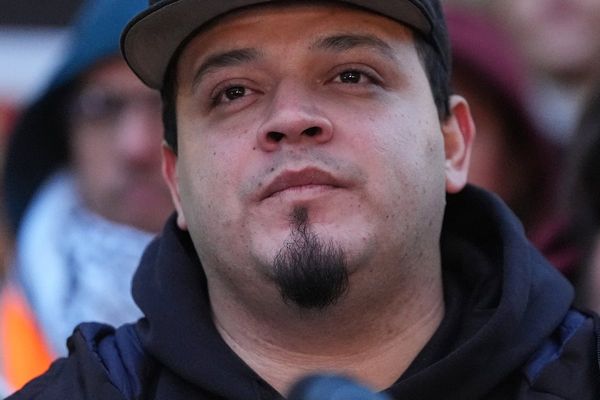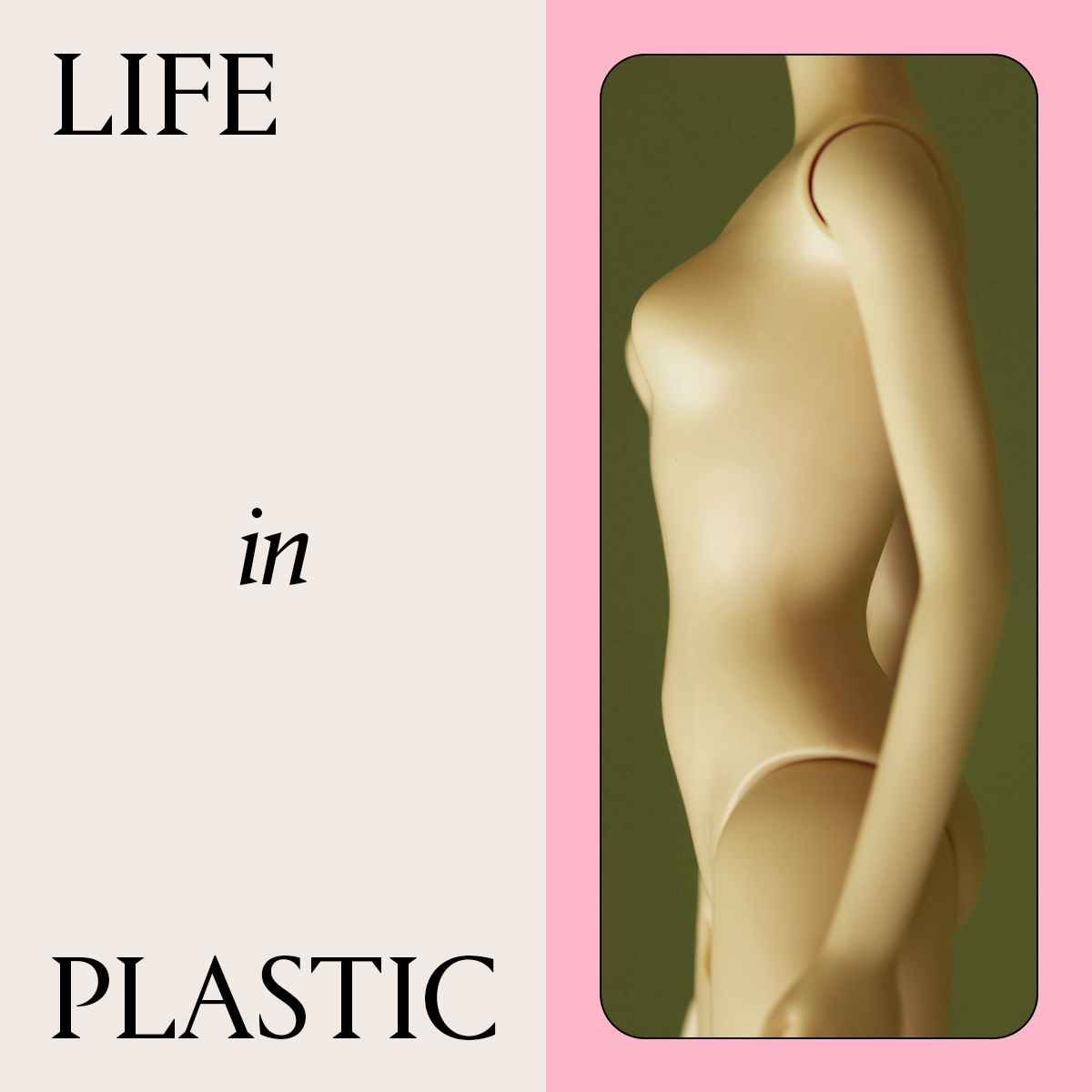
Nothing gets us more excited than talking about a not-so-little tweakment or a nip-tuck procedure. In the spirit of transparency, Marie Claire’s aesthetics column, Life in Plastic, delivers a first-hand peek into what goes on behind the doctor’s door.
Let's get right to the point: I hit puberty around 12. My boobs went straight past bug bites to melons in nine months tops. My double-A cup friends were mesmerized—such is the tween way. But with one breast resembling a cantalope and the other a jumbo watermelon, hiding my wildly unsymmetrical boobs became my number one priority. Bra minimizers were my best friend (shoutout Wacoal), and my wardrobe was exclusively filled with flowy tops and high necklines. Cleavage? Yeah, never showed her.
Getting a breast reduction was always top of mind. Not only did I have all the usual complaints like back pain, difficulty sleeping comfortably, and constant irritation when working out, but plastic surgery was an often-discussed and never-taboo topic in my household. (My uncle is a plastic surgeon, my father is a facial plastic surgeon, and my mom has proudly had a tummy tuck and breast reduction/lift.) It was always a pretty well-known fact of life that I would eventually go under the knife. The Big Question was when. Most doctors recommend waiting until around 18-years-old, when the breasts are fully grown. I played it on the safe side and had my first surgery (yes, I had two, so buckle up for a crazy story) at 21.
Unfortunately, my journey to little boobies was not a simple one. I’ll get into all the nitty-gritty, somewhat gory details below, but long story short, I lost blood flow to my left breast during the healing process, and after eight months of uncomfortable healing, I ended up with a large, thick, purple scar. This story isn’t to impart fear or talk anyone out of a breast reduction. What happened to me is rare—but it does happen. Any surgery comes with risks and side effects (you sign your name on the dotted line for a reason), and unfortunately, I got a front row seat to a not-so-fun one. It’s not through the fault of my original doctor—he did a great job, but you always run the risk of issues happening, like losing blood supply to your boob.
Fast forward, and the only real solution was to cut out the scar with—you guessed it—a second breast reduction, effectively taking me from what was then a full C to my current size of a small B. Did I want to have two breast reductions under the age of 30? You know, it wasn’t part of my original life-planning forecast. But it did reinforce that even in a society that talks so cavalierly about aesthetic procedures big and small, it’s important to remember that side effects do happen and no treatment is without risk.
Now that I’m a few years out from my Breast Reduction Saga, which lasted a grand total of two and half years, I’m often asked: would you do it again if you knew what was in store? The candid, honest answer: 100 percent. Shocking to some I know, but having smaller, evenly sized, don’t-need-to-wear-a-bra boobs has made quite literally every aspect of my life easier.
I don’t think twice about leaving the house without an underwire, straps aren’t digging into my shoulders 24/7, and neck spasms from carrying around 10 extra pounds are non-existent. I don’t have to toss my boobs to the side in order to get to sleep (if you have big boobs, you know what I’m talking about), clothes fit better and shirts actually button. My nipples point out at a 90-degree angle, not down 180 degrees. I feel a million times more comfortable in my own skin.
While my first recovery was a nightmare, my second was a breeze. I’ve lived the breast reduction life on both ends of the spectrum. And because I am an open book about aesthetic treatments—I am a beauty editor for a reason—I’m sharing every little detail about my experience, below.
My First Breast Reduction
It was my senior year of college. I had a consultation in October during my fall break and went in for surgery come December, which was my winter break. I was warned I would be a somewhat complicated case. Not only were boobs huge, but they were also two wildly different sizes. My left breast was a DDD or F (depending on who was measuring), and the right breast was a D. Congenital Breast Asymmetry is a common condition, but it does make the surgery more difficult. Not only is there more breast tissue to remove, but correcting the nipple placement and achieving visual symmetry requires both time and skill.
Still, I went ahead. I took the necessary precautions two weeks prior to surgery, like stopping blood thinners and fish oil supplements. The day of, the team escorted me into the surgery center, brought me into a room, and told me to change into a medical gown. The doctor came in and drew on my boobs with a black Sharpie to denote where he would be making incisions and the new shape and placement of my nipples. I was pretty shaky, albeit very excited.
Next thing I knew I was lying on the operating table receiving anesthesia for roughly four hours—for reference, a reduction typically takes around two to five. When my eyes opened in the recovery room, the team told me everything went according to plan—a whopping six pounds came out of the left boob and four pounds out of the right. (We love that.) I was a bit loopy, but within roughly an hour, I was in the car on my way home.
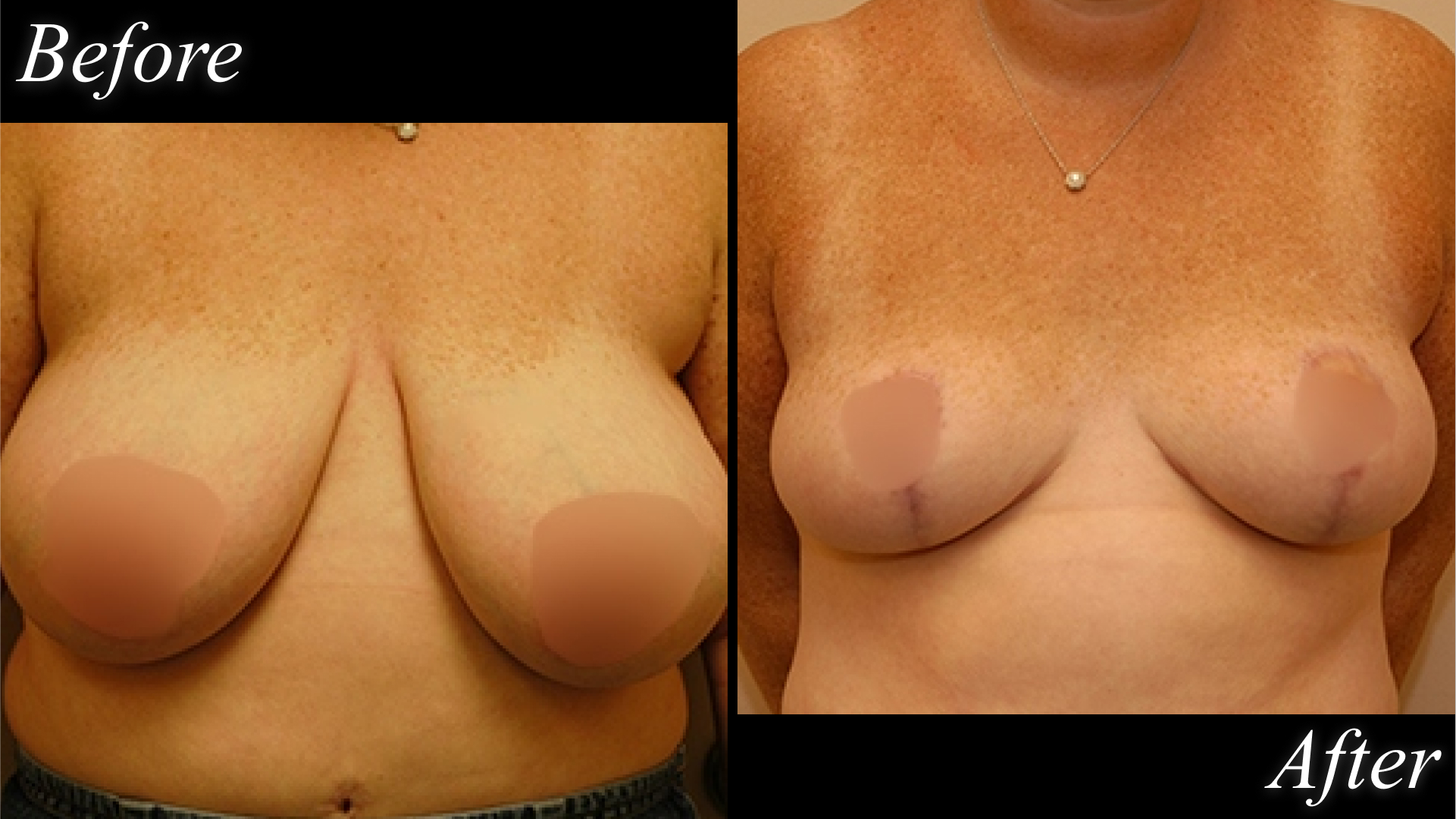
My First Breast Reduction Recovery
Recovery was a bit harder than I anticipated. The first two days were rough—granted, I had a little liposuction done on my bra roll, which contributed to extra pain. I was given prescription pain medication, which I took like clockwork for 48 hours. Sleeping was a bit of a mess, too. As a stomach sleeper, falling and staying asleep on my back was a challenge. My upper body strength was shot and I needed an assist to make even the slightest movement. (I ended up throwing out my back, which was candidly one of the worst parts of the recovery.) I could barely lift my arms above my hips for a good week and wore exclusively zip-up sweatshirts and button-ups. Washing my hair truly wasn’t feasible for five days, at which point I treated myself to a blowout.
My drains, which are essentially tubes that allow fluid and blood to come out of my incision, were removed seven days in. This is around the time they told me I would start to feel more like myself. The drains were removed—as was the fanny pack I was wearing 24/7 to hold them—and my breasts were re-wrapped in the tight bandage.
My Breast Reduction Complication
Of course, there’s a but—that’s why you’re reading this. A few more days down the line, I noticed that the tissue on my left breast was starting to adopt a purplish-black hue. Obviously, that's not good. Somewhere along my recovery journey, blood flow stopped reaching my breast tissue, causing the skin to die. “Necrosis or death of tissue happens for several reasons including impaired blood supply, smoking, external pressure from the bra, or the tissue just gets damaged, kinked, or twisted—everyones anatomy is different,” says board-certified plastic surgeon and founder of Kole Plastic Surgery Ed Kole, M.D.. “This leads to impaired blood flow and results in tissue loss.”
And so started a pretty rough healing journey. The dead tissue—which started below my nipple and ran to the bottom of my breast in a triangle shape about the size of an onigiri—had to regrow or granulate in. Translation: form from the inside out, which presents as bumpy tissue as the area forms a new vascular supply. I applied a heavy dose of Silver Sulfadiazine 1% Cream (a prescription wound healing agent) twice daily, covered the area with fresh gauze, and wore compression bras for nearly eight months (in a properly healed reduction, surgical bras are only necessary for the first six weeks).
It was painful. I couldn’t carry my own groceries or walk more than 5,000 steps without feeling utterly depleted and achy. I didn’t go out to bars or clubs with my friends for fear of someone accidentally knocking into my left boob. It was Not Fun mentally or physically. Around a year in, my skin had reformed and closed the open wound. It was also purple, which stood out like a sore thumb against my ghostly pale skin.
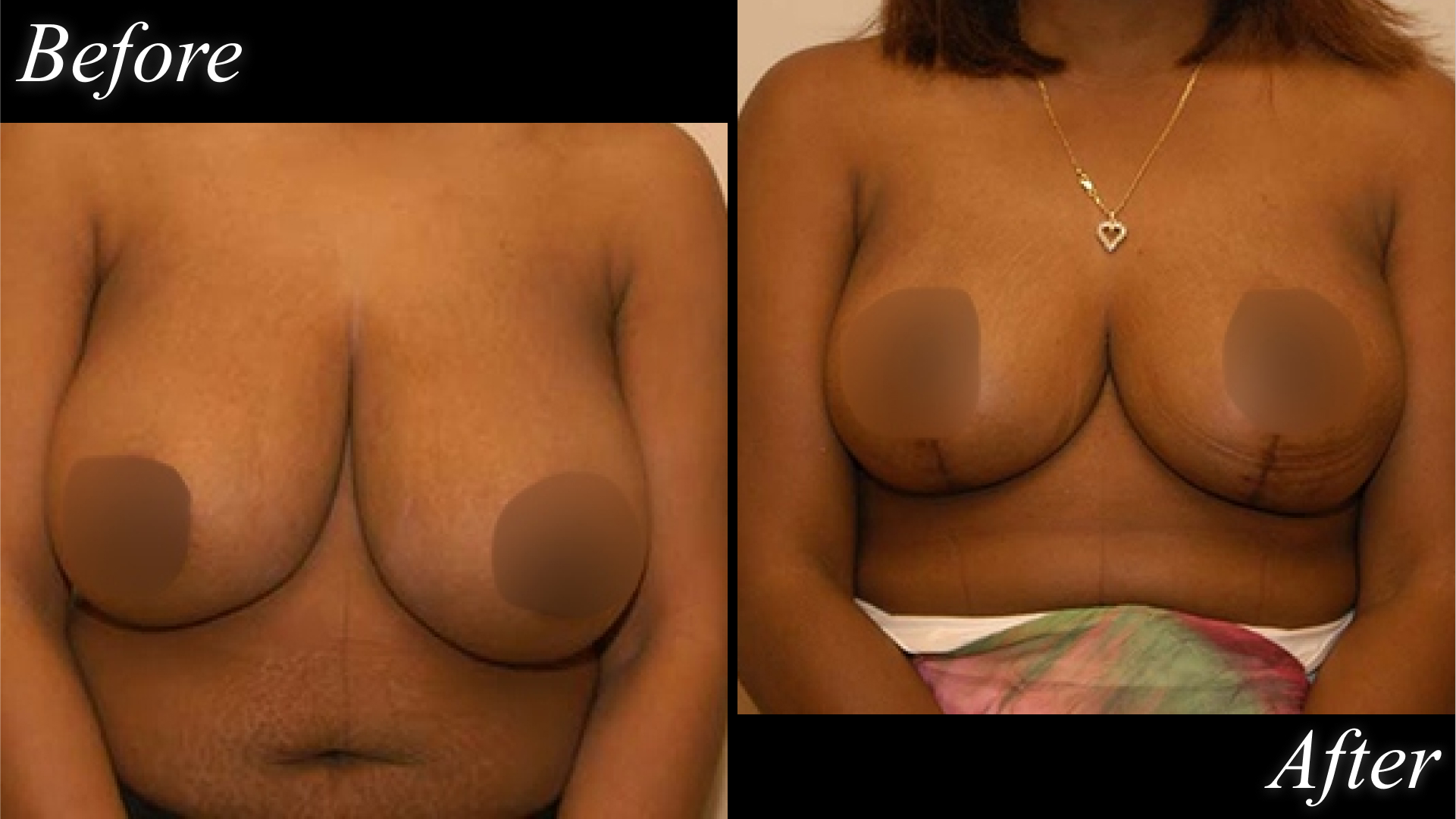
My Second Breast Reduction
Now the fun part! About a year after the scar had settled in, my new doctor—Dr. Kole—was ready to talk about revision options. A heavy-duty laser, like a CO2, was an option; it would be able to help reduce the purple pigment and give the scar a smoother feel. That being said, I was 25 at the time and wasn’t down with a half-baked solution. So we landed on another reduction, which would cut out the scar, re-suture the boob, and make the right breast the same size as the left. To do so, my full Cs would have to become Bs. Still, it was worthwhile trade when (mostly) scar-less boobs were in my future.
Armed with deep-rooted anxiety about going under again (I’d be lying if I said that the trauma of living with an open wound for eight months didn’t scare me), I started the breast reduction process over yet again. We did a consultation. The process mimicked my first in that he told me he would make a new incision, following the original lines wherever possible. Because my breasts were much smaller, he also wouldn’t have to use drains.
The most shocking part for me: Dr. Kole informed me that I would likely have to give up my choice to breastfeed in the future. “Each reduction removes glandular tissue and severs milk ducts, decreasing the ability to produce and transport milk,” explains board-certified plastic surgeon Dr. Lara Devgan. “Multiple reductions increase the likelihood of significant duct disruption, making breastfeeding less feasible.” It wasn’t ideal, but I still chose to move full speed ahead.
When it was time for surgery, I pretty much knew exactly what to expect. Pre-op precautions, a quick consult, anesthesia, and recovery room.
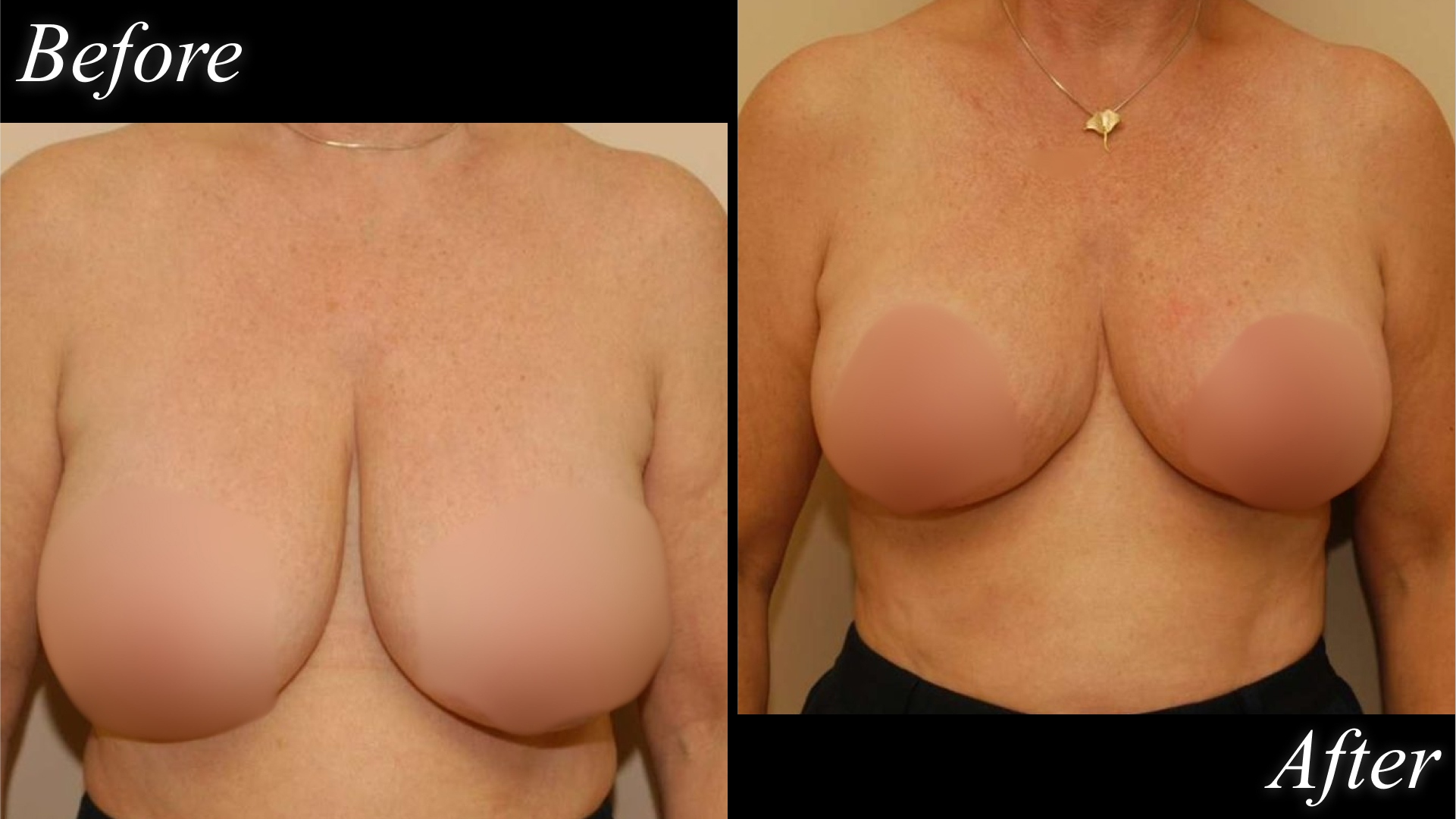
My Second Breast Reduction Recovery
The day of surgery left me out of it. I slept the entire day away from the residual (exhaustive) effects of anesthesia. Sleeping on my back was annoying (to be expected), but I was extra cautious about my movements after throwing my back out the first go round. By the time I woke up the next morning, I already felt like a new person. I didn’t need any prescription pain medication this time. Advil and Tylenol did the trick. I was walking—well, shuffling—around the house 24 hours post-op.
I started applying scar cream—I used a mix of Mederma Scar Gel in the morning and silicone patches at night—around the two-week mark. I had little lollipop scars, meaning a vertical line down the center of each boob and a horizontal line at the base. (I didn’t treat my scars the first go-round, as it was too difficult with gauze and an open wound.) They were a red-purple color, which is to be expected.
Six weeks in was the next big marker. Almost all my sutures had dissolved. I was able to finally stop wearing a surgical bra (yay!) and could resume working out. I felt entirely back to myself. Of course, some healing still needed to happen. My scars had dark coloring and, I’ll be honest, my nipples looked a little funky for a while—kind of like they had been chewed up and spit out with weird ridges around the edges. It took about a year for them to level out. But otherwise, I was 100 percent normal in two-ish months.
My Breast Reduction Takeaway
Not to be dramatic (I’m going to be dramatic), I’m a new women with my new boobs. Now, it’s four years post-second surgery and I barely wear a bra. My boobs are symetrical for the first time in my life. The scar from my first reduction is nearly entirely removed. I still have a small half-inch section of dense, scarred-over tissue that couldn’t be cut out, but it’s faded so much that it doesn’t bother me in the slightest. I feel much more at ease in my skin today than I did five years ago.
Is my story untraditional? Absolutely. I’ve simultaneously experienced one of the most hellish side effects with round one of breast reduction and had an unbelievably easy, seamless experience on round two—all under the age of 30, I might add. And still, it’s the absolute best decision I’ve ever made in my life. I’d do it all over again to achieve these little bug bite boobs I have today.
Why Trust Marie Claire
For more than 30 years, Marie Claire has been an internationally recognized destination for news, fashion and beauty trends, investigative packages, and more. When it comes to the products Marie Claire recommends, we take your faith in us seriously. Every product that we feature comes personally recommended by a Marie Claire writer or editor, or by an expert we’ve spoken to firsthand.

